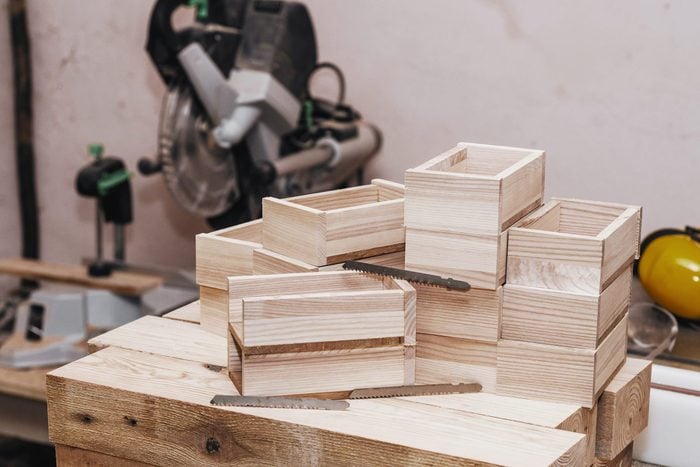Woodworking: What To Know About Ash Wood
Updated: Dec. 01, 2023

Wondering what you should know about ash wood before using it for a woodworking project? A pro woodworker gives his insights.
Ash is a truly underrated wood. With a density and porosity similar to white oak, it’s a real workhorse. And it’s nice to work with whether you use hand tools or machines.
Ash is used in everything from high-end furniture to baseball bats. I will walk you through everything you need to know about ash so you have the confidence to use it in your next woodworking project.
On This Page
What is Ash Wood?
Ash is by definition a hardwood, meaning it comes from a deciduous tree (i.e. a tree that sheds its leaves each autumn) called the white ash. Its heartwood has a medium brown color, while the sapwood is cream or beige.
Due to the fast growth of the white ash tree, the sapwood can be substantial, which actually isn’t a bad thing. Woodworkers often seek out the pale, creamy color of ash sapwood as an alternative to the brown color of white oak. In general, ash’s workability is similar to white oak.
Types of Ash Wood
Here are three main types of ash trees, plus two other terms to know:
- White ash: White ash grows in the Eastern U.S. and is noted for its lighter brown heartwood color compared to its cousin, the black ash. It has good dimensional stability and a Janka hardness rating of 1,320 pound-force (lbf). The Janka rating comes from a test that measures the density of wood species. For context, cherry has a Janka rating of 950 lbf and white oak comes in at 1,360 lbf.
- Black ash: Growing in the Northeastern U.S. and Canada, the black ash is slightly darker in color and less dense than white ash, with a Janka rating of 850 lbf. Black ash, however, is notable as the preferred species of the destructive emerald ash borer.
- European ash: Largely indistinguishable from white ash, European ash grows in Europe and southwestern Asia. The only practical way to know if you are purchasing European ash is to ask where the lumber was sourced.
- Swamp ash: Not a distinct species of ash, but a term often used by luthiers (someone who makes stringed instruments) to describe the lightweight lumber of an ash tree that grew in a wet or swampy area.
- Olive ash: Again, not a distinct species of ash, but a term used to describe the dark, streaky heartwood found in some ash trees that resembles the wood of olive trees. Most commercially available olive ash occurs as imported European ash.
The emerald ash borer beetle is believed to have been inadvertently introduced to North America from Asia in the 1990s. Lacking any natural predators, it spread across the continent in the last few decades. It has already ruined hundreds of millions of ash trees. It is believed that ash populations will continue to decline as much as 80 percent over the next 75 years.
The Pros and Cons of Ash Wood
Pros
- Availability: Ash can be found at nearly all hardwood lumber retailers.
- Price: Ash is among the least expensive domestic hardwoods to purchase commercially.
- Durability: Ash is a dense, tough wood that can take a beating and maintain its beauty.
Cons
- Color: Many ash boards will have some mix of heartwood and sapwood, making color matching more difficult.
- Rot resistance: Ash is rated poorly for rot resistance and insect resistance, making it a less than ideal choice for outdoor woodworking projects.
What Is Ash Wood Used For?
Ash is used in lots of applications, including:
-
Furniture: Tables, chairs and anything that requires durability.
-
Utility woodwork: From flooring to crates to interior millwork, ash is chosen for its toughness.
-
Baseball bats: That’s right! Baseball bats are often made out of ash.
Ash Wood Cost and Purchasing
Although ash is in the lower price range for domestic hardwoods, as the ash population continues to decline, be prepared for prices to increase. Expect to pay from $5 to $10 per board foot, depending on width and grade. For comparison, most other furniture-grade domestic hardwoods cost from $5 to $15 per board foot.
